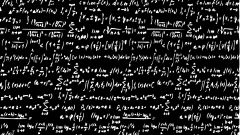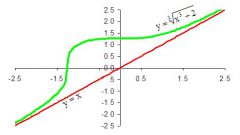Instruction
1
The point of inflection of the function must belong to the domain of denition that you want to find in the first place. The graph of the function is a line, which may be continuous or have gaps monotonically decrease or increase, have a minimum or maximum point (asymptote) to be convex or concave. A sharp change of the last two States and is called inflection.
2
Necessary condition for the existence of points of inflection of a function is equal to the second derivative zero. Thus twice differentiating the function and equating the resulting expression to zero to find the abscissa of the possible points of inflection.
3
This condition follows from the definition of the properties of convexity and concavity of the graph of the function, i.e. negative and positive value of the second derivative. At the point of inflection is a sharp change of these properties, then the derivative becomes zero. However, the equality to zero does not serve to indicate the inflection.
4
There are two sufficient indication that was found in the previous step belongs to the abscissa of the point of inflection:Through this point draw a tangent to the graph of the function. The second derivative has different signs on the right and left of the intended point of inflection. Thus, its existence at the point not necessarily enough to determine that she changes sign.The second derivative of the function equal to zero, and the third is not.
5
The first sufficient condition is universal and is used more often than others. Consider the illustrating example: y = (3•x + 3)• ∛(x - 5).
6
Solution.Find the domain of definition. In this case there are no restrictions, therefore, it is the whole space of real numbers. Calculate the first derivative:y’ = 3•∛(x - 5) + (3•x + 3)/∛(x - 5)2.
7
Note the appearance of the fraction. From this it follows that the scope of the definition of the derivative is limited. The point x = 5 is punctured, and thus will flow through it tangent, which partly corresponds to the first sign of the adequacy of inflection.
8
Determine one-sided limits for the resulting expression as x → 5 – 0 and x → 5 + 0. They are equal to -∞ and +∞. You have proved that through the point x=5 is a vertical tangent. This point may be a point of inflection, but first calculate the second derivative:Y’ = 1/∛(x - 5)2 + 3/∛(x - 5)2 – 2/3•(3•x + 3)/∛(x - 5)^5 = (2•x – 22)/∛(x - 5)^5.
9
Omit the denominator, since x = 5 you have applied. Solve the equation 2•x – 22 = 0. It has a single root x = 11.The last stage is confirmation that the point x = 5 and x = 11 are points of inflection. Analyze the behavior of second derivative around. It is obvious that at x = 5 it changes the sign from "+" to " - " and x = 11 – Vice versa. Conclusion: both points are points of inflection. Made the first sufficient condition.





